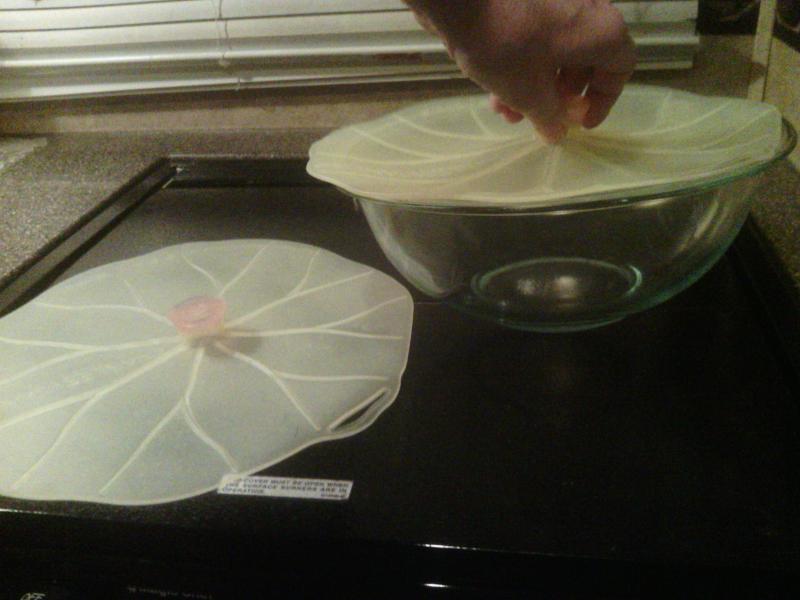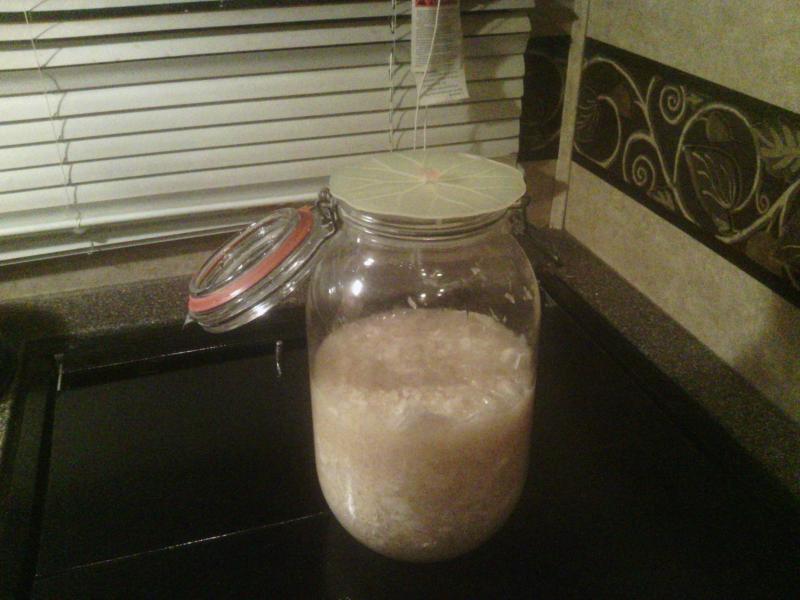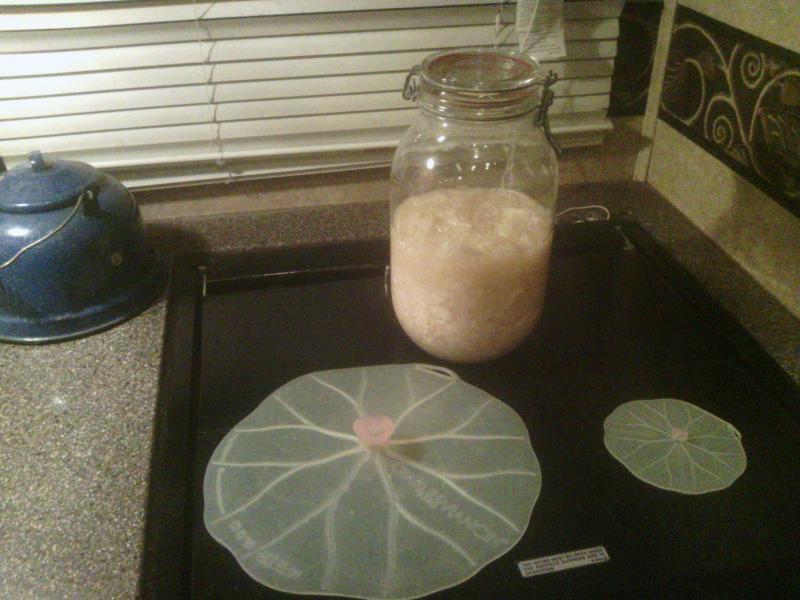-
Posts
13,753 -
Joined
-
Last visited
Content Type
Profiles
Forums
Store
Help Articles
Everything posted by Smithy
-
I applaud your creativity! With regard to the potatoes: what about a quick saute in very hot oil, with some good seasonings? I take it these baby potatoes are already cooked? What is their texture out of the jar?
-
I'm eager to read your assessments of the various types, as you learn more and develop preferences.
-

eG Foodblog: munchymom - Livin' La Vida Locavore
Smithy replied to a topic in Food Traditions & Culture
Thanks for that information about the spice packets. Those are new to me. Funny you should mention those, rotuts; tonight's dinner was based on Patak's Mild Curry sauce! I bought it on a whim some time ago. We both liked it a lot...enough to figure we'll keep it on hand routinely, and enough that I, the cook, have been declared A Genius.OK, back to the blog. Munchymom, if it isn't too personal: are you cooking for yourself only, these days? And what led you to your current location? (If you'd rather not answer, a Lofty Silence is just fine.) -

eG Foodblog: munchymom - Livin' La Vida Locavore
Smithy replied to a topic in Food Traditions & Culture
I love Indian food. Do you find yourself relying on nearby restaurants for certain cuisines (like Indian), or do you make your own sometimes? I'm guessing that you have a broad selection of restaurants close by where you live. -

eG Foodblog: munchymom - Livin' La Vida Locavore
Smithy replied to a topic in Food Traditions & Culture
I'm with you on the green bell peppers, although I've found a (very) few cases where they really are better than the ripe ones. Breakfast alfresco...how lovely! And that meal last night!! That looked wonderful. Did you make the horseradish sauce? -
I recently heard a poem about having reached the age of "relay" errands. One person goes downstairs to the requisite area, while the other person waits at the top of the stairs to yell down the answer to "what did I come down here for?" Back to the business of cleaning napkins: I have found that some of the "cotton twill" napkins I've purchased for their color and low price take grease stains that I haven't gotten out with standard washing. As far as I can tell they're from food grease: maybe vegetable or olive oil, maybe something more solid at room temperature. They're fine for our home use but not for company, unless I can get the spots out. For those of you who do use cloth, do you have a preferred stain remover?
-
That was my sense of Amazon, also, although I may revisit the issue with regard to valuable books, if I ever decide to part with them. For the books I've given away so far, I've much preferred the feeling that I've given to a useful cause, and I wasn't obliged to wait for a buyer.
-

eG Foodblog: munchymom - Livin' La Vida Locavore
Smithy replied to a topic in Food Traditions & Culture
One of my favorite uncles used to live in Delray Beach, and he wrote interesting and educational letters about the agricultural productivity of Palm Beach County. You're in a good place for CSA and locavore eating. -

eG Foodblog: munchymom - Livin' La Vida Locavore
Smithy replied to a topic in Food Traditions & Culture
I'm looking forward to this! You're in Boca Raton? -
Cloth napkins, almost always. I dislike the wastefulness of of single-use paper napkins, including the water needed to make them, although I'm not a purist on this issue: I do use paper towels, and other disposable paper products, when they seem like the best material for the job. It could be that cloth napkins help satisfy my nearly-terminal weakness for textiles. I do love cloth: its colors, its patterns, its texture, its ability to combine utility with beauty. It's usually just 2 of us, and the napkins stay in position until I deem them ready for the laundry, in which case they go into the laundry basket until time to wash. He uses his napkin, I use mine, and I can't think of a germ we haven't shared already. When we entertain, all the table linens are fresh, and the guests' linens go into the wash afterward. Y'all can come visit us any time, without having to worry about sharing somebody's germs.
-
I know of no such restriction in California, and can't imagine why there should be one anywhere. This summer I donated my mother's set of Corelle dinnerware and it was gladly received. I think it's just so generally well-appreciated that, as dcarch said, people don't want to part with it.
-
Huh. the Egyptian-themed plate had me going generically toward someone of Mideastern extraction living in the USA, but "she" throws me. We haven't seen Behemoth in ages, and it can't be Hassouni or Foodman due to the gender. I'm eager to see the answer!
-
I bought mine at some of my favorite kitchen stores. They're getting easier to find, so you probably don't need to go to your local Sur la Table for them. If you want to see them online, just google "Charles Viancin" or, for what I'm showing, "Charles Viancin lily pads". A lot of links will pop up. Edited to add gratuitous Amazon link: AMAZON LINK
-
The decision has been made by now, I suspect, but here's my input anyway. I can understand your not wanting to invite strangers to your wedding, but can you make the country club donate those meals to a homeless shelter? If it's being purchased, they should have to deliver it. Otherwise, you shouldn't have to pay that much unless there's some contract clause regarding minimums or late guest adjustments. Someday, after the aggravation has died down, you'll have a good story to tell. Meanwhile, I wish you a joyous celebration and an excellent marriage.
-
To elaborate on Mjx's answer: they're very smooth and somewhat flexible, so they "stick" just a bit to the rim of any sufficiently smooth object. Glass, plastic, metal: if the rim is smooth, there's a good enough fit that if you pull up on the handle of the lid, air can't get in to break the seal. On the other hand, if you simply life an edge, the lid releases. If gas pressure builds up under the lid, that gas can escape because the contact between the rim and the lid isn't sticky enough to trap gases in. My sister and I established that it will hold against a small liquid pressure - sloshing gently - but I wouldn't trust it for transport as much as, say, a fitted snap-on lid.
-
Earlier this year, or maybe last year, I started picking up these great silicone toppers, marketed under the name of Charles Viancin - Paris. (I later read a label and realized they're actually made in China. Let the buyer beware.) These things are great. They're oven-proof to 400F or so, they're microwave-proof, unlike an earlier iteration given to me as a wonderful present, they're refrigerator-proof. They make a very tight one-way seal with any other smooth surface: I can put a lily pad on a Pyrex bowl and lift the bowl by the lilypad's knob...although there are limits (the small lid in the photo can't pick up the jar of kraut in the photo), and the manufacturer does NOT recommend using the lid to carry a load. The one thing absolutely prohibited is to cut on these with a sharp object, and it makes sense: surely some knife will ruin the smooth surface, and then you won't have a good seal. Most of my lids are in the shape of lily pads - very whimsical - but there are also sunflower shapes and banana leaf shapes. The banana leaves are squarish or rectangularish, and intended for thing like casserole dishes. Aside from the fact that these can't be biodegradable and are likely to be around even after the cockroaches all die off, I think these are a wonderful innovation. Is anyone else around here using them?
-
Do you have a picture of the lid?I've been meaning to post about this on the Kitchen Consumer topic, but here's a great intro. I've been quite taken with the Charles Viancin silicon lids. Mine are shaped like lily pads, but they now come in sunflower and banana leaf shapes as well, and in various sizes. The bottoms are so smooth that they make a very tight seal with any other smooth surface, so air can escape but not return. The lily pad I used was slightly larger than the jar opening. I've included another photo with different sizes.
-
Intracoastal waterway. Judiu?
-
I'm so glad to see this topic come back to life! (Sorry, I couldn't resist the theme. I know you've both been busy.) I'm very taken with the imagery of a beating masa by hand until fluffy and light. Strength, indeed! I have to resort to electricity to whip cream, for heaven's sake, much less masa. The corundas sound tasty. Thanks to Heidi for adding a video, I'm still eager to hear more, after y'all catch your breath! Like Nancy in Mexico, I want to know why it's called difuntos in Ecuador. Anything else you can add will be welcome. If it isn't too far off-topic, I'd like to know whether people *feel* the presence of loved ones' returns, or simply try to recognize that they might be there? The flowers and recognition of babies lost particularly haunts me. I hope the parents find some comfort.
-
Hmm. Could it instead be somewhere on the Gulf Coast, or along an Intracoastal Waterway? The two shores look pretty close together, if I'm looking at the photo properly.
-
OK, now I want a Caja China box. And an excuse to use it. This looks a lot like a commercially-prepared version of a box Mayhaw Man used, way back when, for roasting large chunks of meat. I think he called the topic "Contraption Cooking". If I can find it, I'll post a link...very entertaining, as I recall. I never got around to building one of those, either; I just drooled and admired. As I will on this topic, no doubt. Edited to add: the topic is called "The boy ain't right in the head" and it's at http://forums.egullet.org/topic/67441-the-boy-aint-right-in-the-head The reference to Contraption Cooking is a bit further down, referring to book that was then in progress.
-
Lancaster/Palmdale area, perhaps? I get the impression Andie can grow just about anything.
-
Infested? In Palm Springs?! What pest, do you know? There should be an ag extension advisor to help, even if you have to reach across the pass to UC Riverside. Have you tried them for advice? You should be able to find someone who can give solid guidance, given your location. At any rate, good luck with the ordered olives!
-
Well. Sometime long about mid-October I was given a large head of cabbage from a friend's garden. I washed, shredded in the food processor, and packed it into a 1-gallon glass canning jar. I followed the instructions above regarding the amount of salt - overall, I think that head of cabbage got 3 - 4 Tbsp of salt packed into the leaves at the outset. I used some of the large outer leaves to hold the rest down, and filled up the rest of the space with a Ziplock storage bag full of water. In order to make sure there was enough liquid to cover the shredded kraut I added some water, and then in order to ensure that the brine was salty enough I added more salt. (In other words, the salt/water/cabbage ratio wasn't very scientific, but it leaned toward salt overkill.) I didn't seal the jar, but instead topped it with a silicone lid that makes a nice tight seal for things trying to enter but allows gases to escape. Somewhere after 2 weeks I lifted the lid and sniffed. It smelled like kraut. I let it continue. Sometime after that I had to seal the lid for transport. So far, no explosions. Tonight we had our first dinner of sauerkraut and potatoes, with some pork chops. How gratifying! The flavor was excellent, and we have half a gallon left. I'm very glad I got around to trying this!





